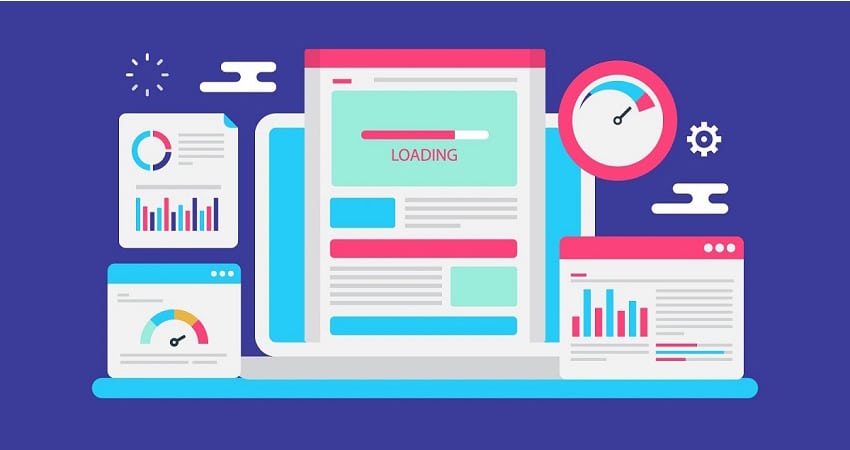Shopping cart abandonment is a real plague for ecommerce, and retailers are trying to find a cure for it. They are making great strides in facilitating signup and checkout processes, cutting extra costs, improving shipping rates and policies, strengthening online store security, and more.
However, such an aspect as a website’s low speed is often ignored. And how wrong it is! Users expect a web page to load in two seconds or less. Consequently, a slow website may lead to 75% in abandonment rates while decreasing customer loyalty twofold. Besides, 64% of shoppers won’t return if an e-store takes too long to load.
These eye-opening stats point to the need for speeding things up. In this feature, we’ll give you three recipes for success.
Leveraging gzip compression
The smaller your files are, the higher a website’s speed is. And one of the easiest ways to reduce load time is to use gzip — a file format and open-source software that lets the server compress website pages.
Here’s what the whole process looks like. After receiving a request for a web page, the website server checks the header to determine if the browser supports gzip. If it does, the server generates a page markup. Gzip, in turn, converts this markup into a compressed data stream. Then, this stream is decompressed by a browser, and the end user gets access to the requested content.
As Google states it, “enabling gzip compression can reduce the size of the transferred response by up to 90%, which can significantly decrease the time to download the resource, reduce data usage for the client, and improve the time to first render of your pages.”
If your online shop is not gzip-enabled yet (you can check it here), find the solution in this comprehensive tutorial.
Capitalizing on CDN
Unless you own a strictly localized business, your ecommerce site will certainly face high traffic peaks with thousands of concurrent users shopping in different parts of the globe. The stakes will be raised during holidays and big sales. Still, gzip compression isn’t enough to provide clients with an outstanding experience.
A more advanced solution might be your platform integration with an optimized content delivery network (CDN). Being in its nutshell a set of distributed servers dispersed worldwide, the CDN gives your clients lightning-quick access to website content regardless of their locations and peak traffic.
Let’s see what happens under the hood. A CDN stores a cached version of your website content in multiple geographical locations, or points of presence (PoPs). Each PoP contains a number of caching servers responsible for delivering the requested web pages based on a customer’s geographical proximity. As a result, you minimize the distance between shoppers and your website’s server.
A simple case in point. When someone in Dublin wants to make a purchase in your Canadian-hosted e-store, the request will be handled by a local Irish PoP — without the need to cross the Atlantic.
In general, the CDN will allow you to reduce website latency, network congestion, content blockages, and other bottlenecks, while enhancing user experience. This approach also guarantees your online shop protection from bots and DDoS attacks.
Minimizing HTTP requests
Another factor that may negatively impact your ecommerce site’s speed is an excessive number of HTTP requests. When accessing an e-store, a user’s browser requests HTML, CSS, or JavaScript files with website content from your server over the HTTP protocol. The more files you have, the more HTTP requests will be generated — leading to increased loading time.
If you want to please customers, try to minimize these HTTP requests. While there isn’t the optimal number of requests a web page should be reduced to, Jeffrey Vocell — principal product marketing manager at HubSpot — suggests striving for 10-30 files per page. Steve Souders, former chief performance expert at Yahoo!, argues their number may be 99.
But how to do the trick? Combine or concatenate multiple CSS stylesheets into a single one, enabling the browser to download all the required style information with one request. The same goes for JavaScript files. Also, minify images and use CSS instead — whenever possible.
In addition, make sure your CSS and JavaScript files are loaded asynchronously. Why? A user’s browser loads a page’s assets from top to bottom. And when it gets to a CSS or a JavaScript file that isn’t asynchronous, the browser gets stuck and can’t go ahead until it has fully loaded the file.
Not the low-hanging fruit
As you’ve likely gathered from this post so far, our recommendations on speed optimization presuppose a high level of technical expertise. And to succeed, you might need help from a company with a proven success record in providing ecommerce web development services.
As there are many factors that may increase loading time of your platform down the road, remember to monitor your website’s speed on a regular basis. You can use Pingdom, GTmetrix, or any other speed test tool for that purpose.
Yana Yelina is a Tech Writer at Oxgile

